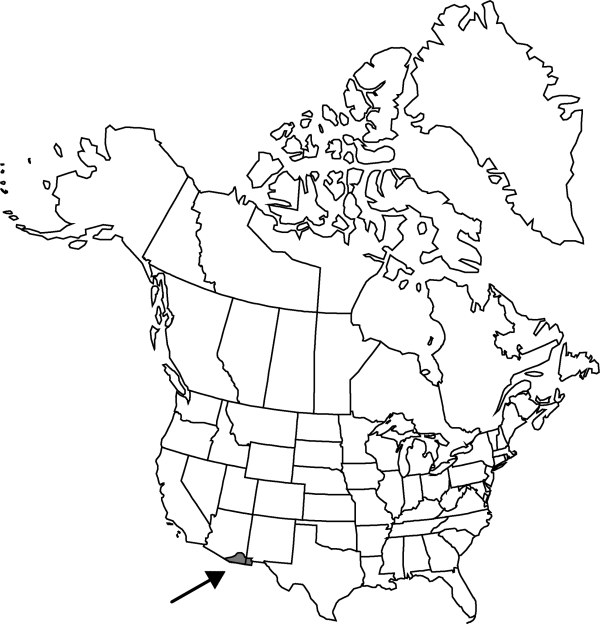Mammillaria wrightii var. wilcoxii
Ariz. Cactuses, 100. 1950.
Common names: Wilcox’s fishhook cactus
Basionym: Mammillaria wilcoxii Toumey ex K. Schumann Gesamtbeschr. Kakt., 545. 1898 (as Mamillaria) Mammillaria meridiorosei Castetter P. Pierce & K. Schwerin
Revision as of 21:40, 16 December 2019 by FNA>Volume Importer
Stem tubercles 6–21 mm. Radial spines usually 16–30 per areole. Flowers 2.2–5.1 cm diam. Fruits 6–15 mm diam.
Phenology: Flowering summer; fruiting fall.
Habitat: Semidesert grasslands, Madrean pine-oak woodlands, steep, rocky slopes, canyons, and valleys, usually on alluvial or igneous substrates
Elevation: 1100-2000 m
Distribution

Ariz., N.Mex., Mexico (Chihuahua, Sonora).
Discussion
In rocky habitats near the Mexican border, populations of Mammillaria wrightii var. wilcoxii tend to have more radial spines and smaller flowers than elsewhere and have been segregated as M. meridiorosei.
Almost half of the published descriptions and illustrations purporting to represent variety wilcoxii are misidentifications of Mammillaria viridiflora.
Selected References
None.
Lower Taxa
None.
... more about "Mammillaria wrightii var. wilcoxii"